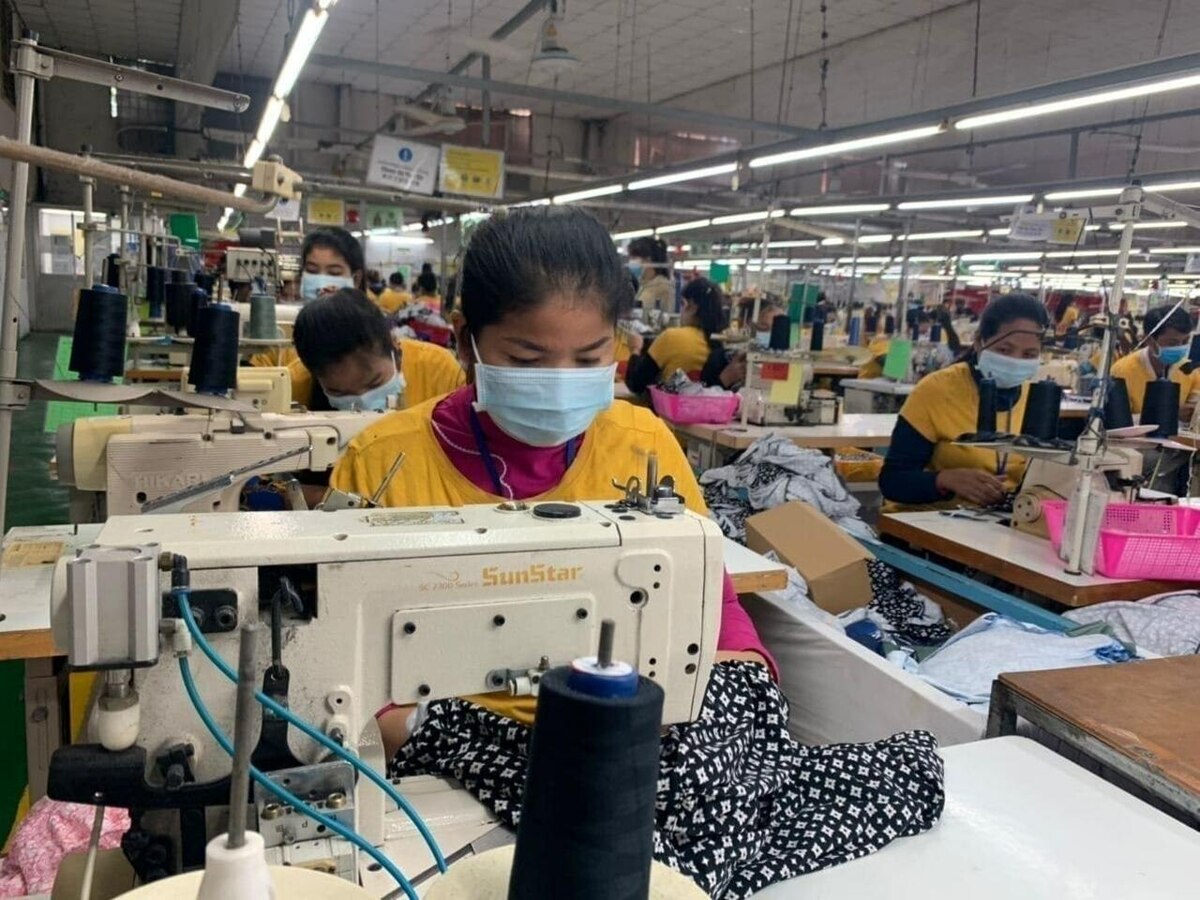Those involved in exports to the US market, as well as Cambodian officials, are all optimistic that Cambodia could see positive results when negotiations with the US on a countervailing duty agreement are concluded, which are scheduled to take place in the middle of this month.

Because the United States is the largest market for Cambodia’s garment industry, the outcome of the negotiations could affect the fate of the Cambodian garment industry and could also give Cambodia different scenarios to respond to the outcome. The government is working hard to find ways to prepare for negotiations with the United States so that the negotiations can have positive results.
According to the announcement of the Royal Government of Cambodia’s Spokesperson’s Unit, the negotiations will take place in person in Washington, D.C., on May 14-15, 2025, with the Cambodian side led by Mr. Sun Chanthol, Deputy Prime Minister and First Vice Chairman of the Council for the Development of Cambodia, but the U.S. side is still unknown.

The US side could be Mr. Howard Lutnick, US Secretary of Commerce, or Mr. Scott Bessent, US Treasury Secretary, or someone else.
After an online meeting between Cambodian officials and Sarah Ellerman, the deputy U.S. Trade Representative for Southeast Asia and the Pacific, Cambodian officials were proud of the coordination of bilateral trade and investment relations between Cambodia and the United States, but they still do not know what the outcome will be.
One person who follows the news about the tariff situation said that we hope, we must hope, and if there is no hope, what are we trying to negotiate? But so far, no country has been able to escape the imposition of these tariffs.

He stated without revealing his identity that “since the administration of Donald Trump “Since implementing this tariff policy in February, no country has been able to receive this tariff preference. Canada, the European Union, China, Mexico, and in ASEAN, Vietnam has also opened negotiations, but there is no light of results yet.” He continued that negotiations generally take time in consideration. Therefore, the results will be released after the extension takes effect in July.
The General Department of Customs and Excise of Cambodia showed that in 2024, Cambodia-US trade reached $10.18 billion, an increase of 11.2 percent, of which Cambodia exported $9.9 billion to the US, an increase of 11.4 percent, while the US imported $264.14 million to Cambodia. In the first quarter of 2025, Cambodia continued to export to the United States at a total value of approximately $2.4 billion, an increase of approximately 22.2 percent.
According to statistics, the United States remains Cambodia’s largest export market, accounting for up to 35 percent of the total export value of $6.8 billion.
In the event that the negotiations do not reach the expected results, It may be difficult for the Cambodian garment industry, but at this time, besides the government itself, there is information that the factories have also made efforts to prevent their factories from closing.
A source close to the garment industry revealed that in factories that export garments to the US market, there has been a shake-up of management, seeing experienced people who have good connections with markets in other destinations replaced.
The same source said that at this time, factories that receive the US market seem to be in a trend of rushing production lines to end their contracts with the US before the tax deadline and also to give time to divert their target to Europe and other markets such as Japan, South Korea, etc.
The same source said that in addition, some factories are negotiating to ask their customers to cover the cost of the countervailing duties. In their place in exports as well. The same source expressed the expectation that if the government facilitates and can reduce logistics costs, combine and introduce additional preferential programs, the industry, which supports about 1 million workers and many other indirect beneficiaries, can cope. So far, Cambodia has been subject to a 49 percent tariff on goods from the United States, the highest in ASEAN, but is currently only applying a 10 percent tariff until July.
So we await all the results with the hope that the negotiations can yield good results and that the garment industry in Cambodia remains an important source of economic growth and employment for the people.

